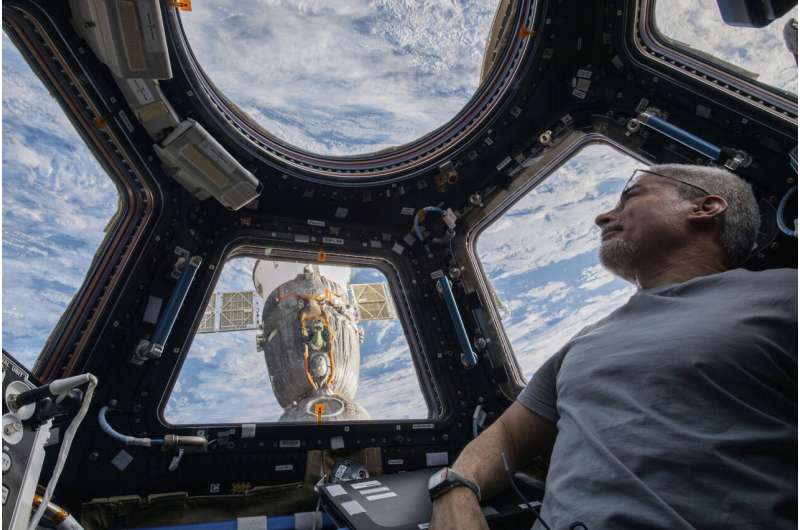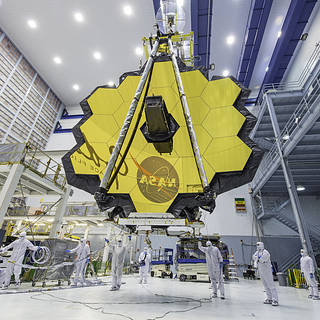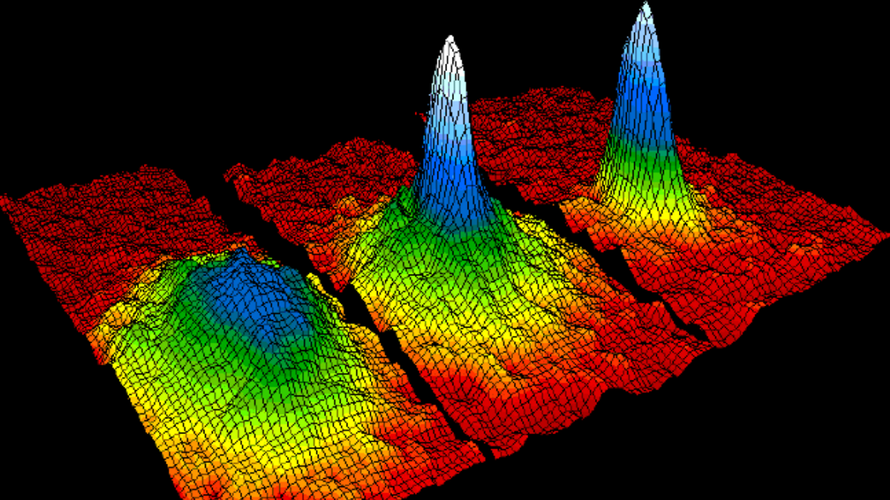
Copernical Team
Pete Davidson headed to space on Blue Origin craft

US astronaut to ride Russian spacecraft home during tensions

NASA to Discuss Progress as Webb Telescope’s Mirrors Align
 NASA will hold a virtual media briefing at noon EDT Wednesday, March 16, to provide an update on the James Webb Space Telescope’s mirror alignment.
NASA will hold a virtual media briefing at noon EDT Wednesday, March 16, to provide an update on the James Webb Space Telescope’s mirror alignment. Telescopes trained on Parker Solar Probe's latest pass around the sun

ESA probing navigation via the quantum realm

ESA’s NAVISP programme – helping to invent the future of European navigation – is probing the science of the very small. The aim is to employ hyper-sensitive quantum technology-based sensors as supplementary navigation solutions, including tracking local variations in gravity that could be matched onto regional and global gravity maps.
"Seafloor fertilizer factory" helped breathe life into Earth
 Scientists reveal a new part of the recipe for complex life on planets, and it involves the onset of a microbial fertilizer factory on the Earth's seafloor roughly 2.6 billion years ago.
The first major rise in oxygen levels on the Earth took place roughly 2.4 to 2.2 billion years ago during the early stage of the Great Oxidation Event.
Scientists are still unsure why and how the Gre
Scientists reveal a new part of the recipe for complex life on planets, and it involves the onset of a microbial fertilizer factory on the Earth's seafloor roughly 2.6 billion years ago.
The first major rise in oxygen levels on the Earth took place roughly 2.4 to 2.2 billion years ago during the early stage of the Great Oxidation Event.
Scientists are still unsure why and how the Gre Icesat-2 data shows Arctic sea ice thinning in just three years
 Over the past two decades, the Arctic has lost about one-third of its winter sea ice volume, largely due to a decline in sea ice that persists over several years, called multiyear ice, according to a new study. The study also found sea ice is likely thinner than previous estimates.
Seasonal sea ice, which melts completely each summer rather than accumulating over years, is replacing thicke
Over the past two decades, the Arctic has lost about one-third of its winter sea ice volume, largely due to a decline in sea ice that persists over several years, called multiyear ice, according to a new study. The study also found sea ice is likely thinner than previous estimates.
Seasonal sea ice, which melts completely each summer rather than accumulating over years, is replacing thicke Wildfire Workshop Accelerates NASA Firefighting Solutions
 In a changing climate, wildfires are becoming more widespread and devastating, threatening more people and land than ever before. In response, NASA is stepping up to the plate to determine what we can do to help fight wildfires - and we have some ideas.
NASA has long been involved in wildfire management through the Science Mission Directorate (SMD) using space-based technologies and other
In a changing climate, wildfires are becoming more widespread and devastating, threatening more people and land than ever before. In response, NASA is stepping up to the plate to determine what we can do to help fight wildfires - and we have some ideas.
NASA has long been involved in wildfire management through the Science Mission Directorate (SMD) using space-based technologies and other Chief designer details China's future lunar missions
 China will carry on its moon research in the future with Chang'e-6, Chang'e-7 and Chang'e-8 missions by 2030, chief designer of the country's lunar exploration program Wu Weiren said.
The Chang'e-6 is scheduled to bring back to Earth lunar samples with a mass of up to 2 kilograms; the Chang'e-7 will be tasked with landing on the lunar south pole and detecting local natural resources; and t
China will carry on its moon research in the future with Chang'e-6, Chang'e-7 and Chang'e-8 missions by 2030, chief designer of the country's lunar exploration program Wu Weiren said.
The Chang'e-6 is scheduled to bring back to Earth lunar samples with a mass of up to 2 kilograms; the Chang'e-7 will be tasked with landing on the lunar south pole and detecting local natural resources; and t Scientists develop a new model of a fundamental process of Earth's global dynamics
 The tectonic plates that form the Earth's surface are like puzzle pieces that are in constant, very slow motion - on average, they move only up to around 10 centimeters a year. But these puzzle pieces don't quite fit together: there are zones on one plate that end up plunging under another - the so-called subduction zones, central to the dynamics of the planet. This movement is slow, but it can
The tectonic plates that form the Earth's surface are like puzzle pieces that are in constant, very slow motion - on average, they move only up to around 10 centimeters a year. But these puzzle pieces don't quite fit together: there are zones on one plate that end up plunging under another - the so-called subduction zones, central to the dynamics of the planet. This movement is slow, but it can 
































